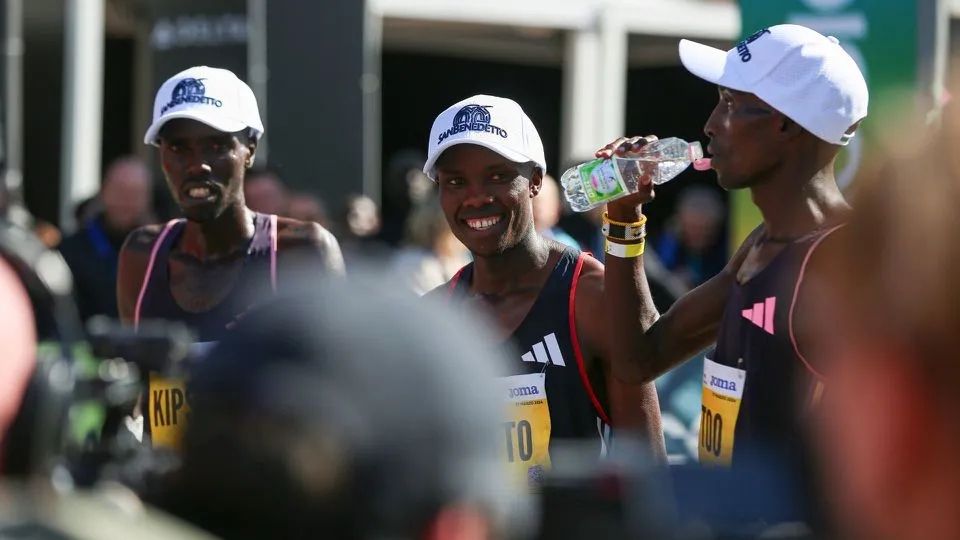Kenyan doping scandal 2025 has once again sent shockwaves through the athletics world, exposing a complex web of personal choices, systemic vulnerabilities, and relentless investigative efforts that are reshaping the future of sport in Kenya. Beyond the surface of regulatory headlines and disciplinary actions lies a tapestry of athletes’ ambitions, medical ethics, and the dogged pursuit of clean competition. Today, we dive beneath the headlines to explore the events, the people at the center, and the ongoing battle to restore trust in Kenyan sports.
From triumph to turmoil: Brian Kipsang’s journey interrupted
Few stories encapsulate the stark highs and lows of elite sport quite like that of Brian Kipsang. At 30, Kipsang had just clocked one of his swiftest marathon times—2:07:58—at Rome’s ACEA Run Time Marathon in March 2025, cementing his position among Kenya’s long-distance elite. But this moment of athletic brilliance would soon unravel. A routine in-competition test revealed the presence of Triamcinolone acetonide, a banned glucocorticoid unless authorized by a Therapeutic Use Exemption (TUE). Kipsang had no such exemption.
The Athletics Integrity Unit (AIU) moved swiftly. Kipsang, upon being notified of the Adverse Analytical Finding, made the life-altering decision not to request a B sample analysis. Instead, he admitted to the violation, accepting a two-year ban set to last until May 2027. Every result, medal, and accolade he earned from March 16, 2025, was subsequently stripped from the record books. In the cutthroat world of distance running, such a sanction is not just a setback—it is a career crossroads.
The emotional and mental toll of doping bans
If Kipsang’s case is a study in lost opportunity, then Teddy Osok’s narrative tells of a fight to reclaim one’s sense of self in the shadow of suspension. The former Tusker FC and Gor Mahia midfielder was handed a four-year ban by the Anti-Doping Agency of Kenya (ADAK) for testing positive for Boldenone. His story is awash with confusion, injury, and frustration—an untimely tackle during an away match, injections administered by team doctors, and a cascade of tests that would eventually seal his fate. Even after submitting documentation and facing tribunal hearings, Osok’s career ground to a halt as anxiety and grief enveloped him and his family.
Yet, Osok’s testimony is one of resilience. He holds onto a dream of a National Team call-up, even as he candidly admits: “That was the most challenging part of my career. I would not wish it on my worst enemy.” His journey from hope, to despair, to cautious optimism highlights the unseen battles athletes wage far beyond the stadium’s glare.
| CASINO | BONUS | INFO | RATING | |
|---|---|---|---|---|
|
bonus
New players get 50 free spins and a Ksh 2500 freebet!
See 7 Bonuses
|
info
BK 0000665 PG 0000405 Good combination of online casino and betting platform |
|||
|
bonus
Daily 25% bonus on your deposits!
See 6 Bonuses
|
info
Curacao 1668/JAZ Generous casino bonuses |
|||
|
bonus
Refer friends, win cash prizes!
|
info
BK 0000672 PG 0000412 Mobile-friendly |
|||
|
bonus
Welcome package: 190,000 KES + 150 FS
See 11 Bonuses
|
info
BK 0000695 PG 0000419 A wide range of bonuses |
Cracking down on supply: The Iten and Eldoret raids
Behind every banned athlete is often a shadow network of suppliers and enablers. May 2025 saw Kenyan authorities, spurred by actionable intelligence, carry out a high-profile raid in Iten—the so-called Home of Champions. Their target: an Indian national allegedly involved in distributing performance-enhancing drugs such as human growth hormone (HGH), meldonium, and mannitol. The stash included IV paraphernalia, syringes, and more, laying bare the sophisticated means by which doping operates in top training centers.
This bust was not isolated. Just weeks prior, James Cheruiyot Kipsanai, a Kenyan pharmacist, eluded capture during a separate operation in Eldoret. Authorities discovered vials of triamcinolone acetonide—the very substance at play in Kipsang’s case—and erythropoietin. Kipsanai now faces multiple charges, including the unauthorized administration of banned substances and operating without proper medical licenses. The dragnet is widening, but investigators know that every arrest is but a step in dismantling a deeply entrenched system.
Kenya’s struggle for sporting purity and global credibility
Kenya’s status as a running superpower is matched only by the scrutiny it faces on the global anti-doping stage. The recent cluster of bans, raids, and investigations has kept the nation on WADA’s Category A list—a grim marker for countries with high doping prevalence. Proud success, it seems, has bred not just champions but also a flourishing black market for forbidden enhancement.
Speaking to the underlying anxieties, ADAK’s Victor Ashiali cautioned athletes about the country’s largely unregulated supplement market, advising them to shun over-the-counter self-medication and always disclose their athlete status to health professionals. The message is clear: vigilance and transparency are as vital as speed and endurance in today’s athletic landscape.
Lessons and hope from a turbulent year
The Kenyan doping scandal 2025 forces us to reckon with the fragile interplay of ambition, pressure, and ethical boundaries. For every ban comes the hope of redemption, and for every arrest, a renewed commitment to cleaning up the system. The essential lessons are these—athletes must take responsibility for substances in their bodies, suppliers and medical professionals must be held to the highest standards, and authorities must never tire in rooting out those who threaten the integrity of sport.
These are not just administrative challenges—they are tests of character, community, and the collective will to protect young talents who dream of crossing finishing lines not just with triumph, but with honor. As 2025 unfolds, the world watches not just Kenya’s finish times, but its resolve to emerge from the shadow of scandal, stronger and more united in the pursuit of genuine greatness.










